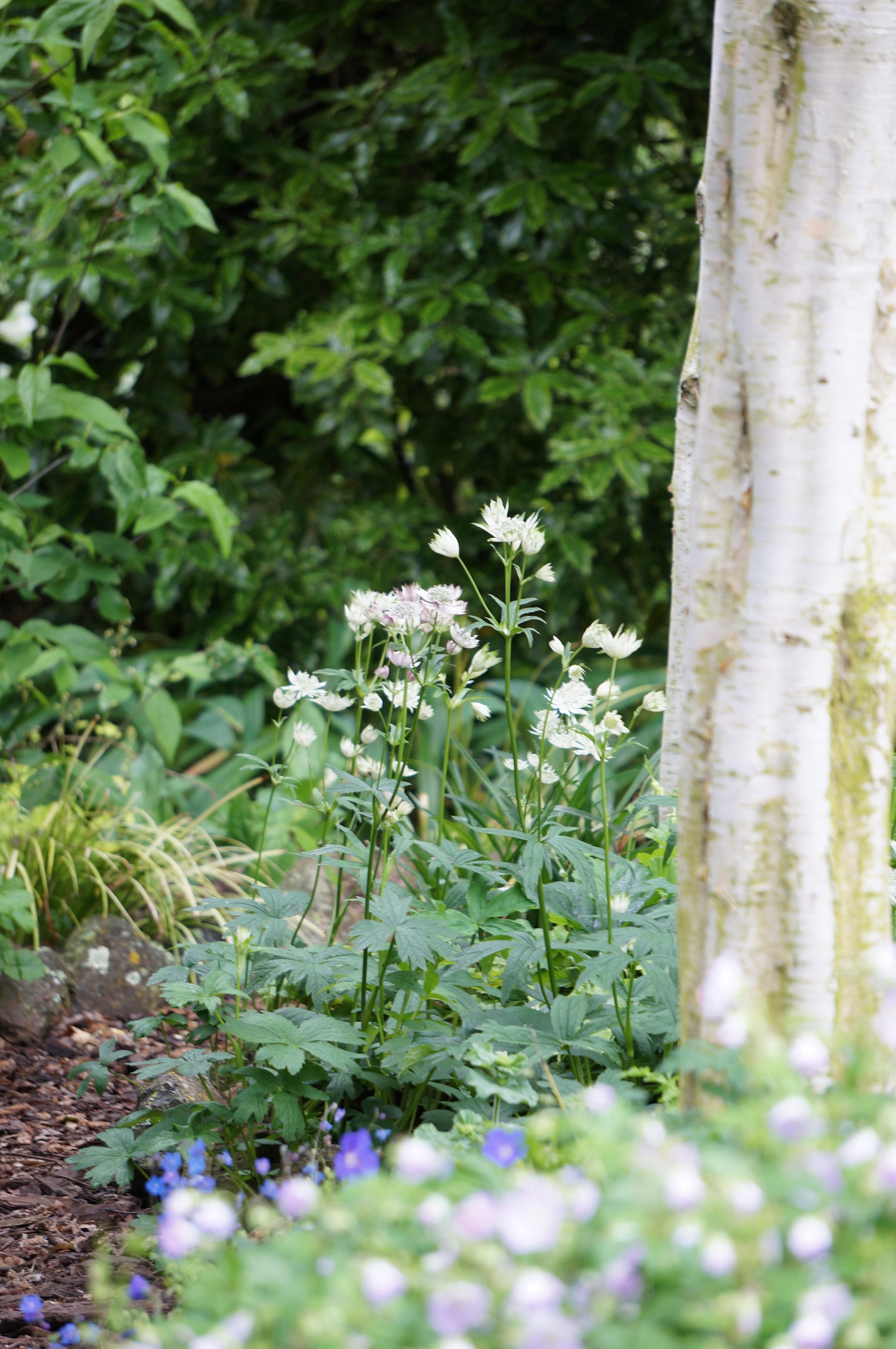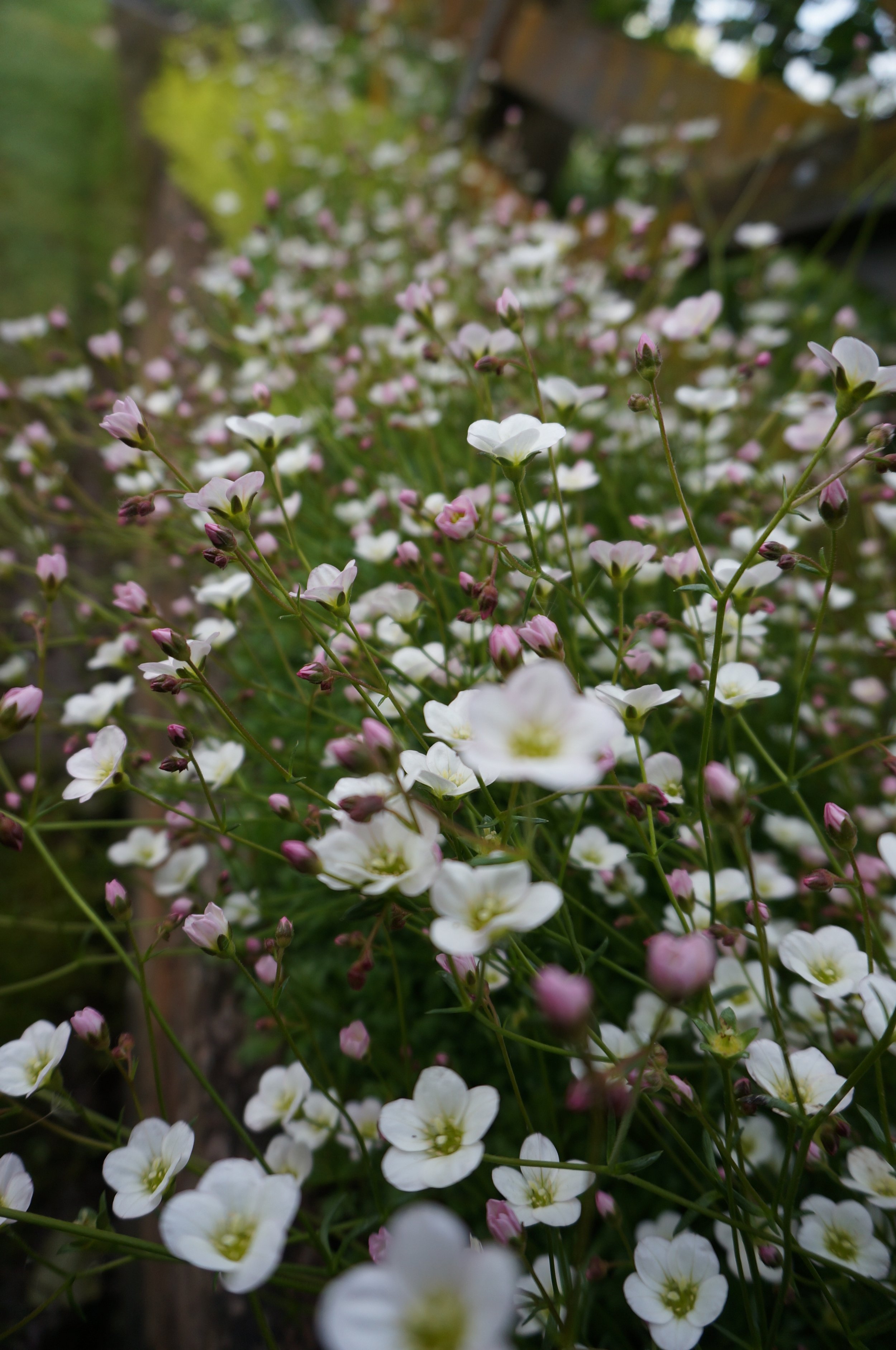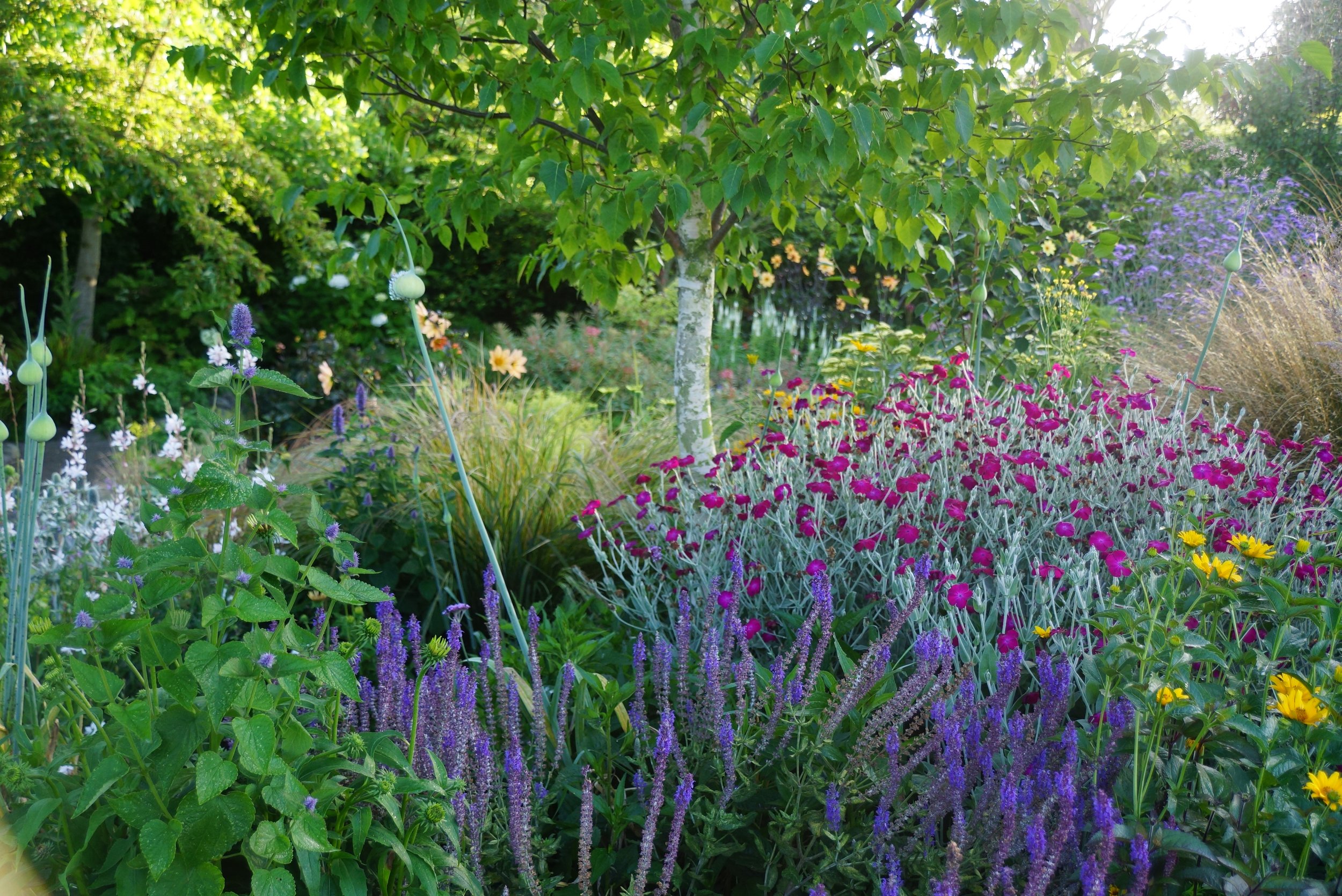LEANING ON A SPADE IS GARDENING TOO
I quite like the phrase ‘dead of winter’, it feels momentous. But in reality, here in the South Island, this is a mucky, muddy time with wet leaves plastered everywhere, squelchy grass underfoot, and low light. It’s at this time I look over to the tropical north with envy. Oh to have banana, bromeliads and colocasia.
But finally here in the south, all our deciduous leaves have fallen, and the old garden year is well and truly finished. The winter cutback is underway and on a sunny July day, nothing makes me happier than being outside with my wheelbarrow and gumboots.
In my younger days, I would race through this phase, eager to get everything chopped down, mulched and put to bed before winter. Then I’d spend the next two months waiting for something to poke its nose above the mulch.
Words and imagery by Jenny Cooper.
A mix of tiny winter finds. The dark petaled Viola ordorata is the nemesis which has spread beyond invitation.
Now I have learned patience and will leave structural plants standing until early spring, to enjoy their lovely forms and muted tones. I’ll do my best to get the whole garden cut back but when life intervenes, sometimes this doesn’t happen. Delightfully, the garden has a ‘self-mulching’ function and spring will come whether or not the Japanese anemone are deadheaded.
In many ways, it would be better to allow the whole garden to gently collapse upon itself with no intervention. Last year’s dead foliage will feed next year’s growth. However, the winter clean-up has one enormous benefit - this slow unpeeling reveals the bones of the garden, and after the hurly-burly of summer, I begin to see the underlying structure.
It is a process of gradual rediscovery and reconnection.
In practical terms, there is a lot of activity involving secateurs, rakes, and pitchforks, and a lot of stooping, lugging and tramping about with wheelbarrows. But more importantly, there is much leaning on a spade handle, contemplating the newly revealed beds. I look, wander away, wander back, and look again. Sometimes putting on the kettle helps. Sometimes I have a problem that needs to be slept on. Once everything is reduced back to bare sticks, I hit the pause button.
With all the summer herbage gone, I can now get a feel for the changes that have happened over the last 12 months. Every plant deserves my full attention, from the humble violet to the enormous liriodendron. How did you find this year, are you happy, do you need help?
I am often surprised at what I find. Who has romped all over their neighbours (gooseneck lysimachia, my eye is on you) and who has been swamped and started to disappear (sorry little Coreopsis verticillata ‘Moonbeam’, how could I think you would survive in this rambunctious part of the garden? I have a quieter bed for you elsewhere).
The end of a love affair with gorgeous astrantia….
Of course, we can notice the garden change at all times of the year but it’s now that we can observe how deciduous trees and shrubs are faring. And this is the perfect time to shift or divide plants that need more room or more light. In a summer dry garden like ours, with no fixed irrigation and many beds completely unirrigated, I favour an autumn upheaval. This is a great time for root growth, and I really want those roots established before the dry begins. So once a decision is made about a problem area, the change can be made immediately.
In areas where the plants are happy and playing nicely together, I cut back and quickly move on. But where I know there is a problem, I cut back in such a way that I can still see the plants, and so better understand their relationship to one another. Perennials such as asters and Phlomis russeliana have a resting rosette so they are still visible in winter. For perennials without a rosette, I cut back to about 4 inches, leaving short stems above ground, for example, astilbes and dahlias. If the plant disappears entirely, (like hosta or deciduous day lily), I’ll mark it with a short cane so I can remember it is there, and visualise it in relation to its bed mates.
With the top growth gone, I can see the extent of plant crowns, and who is weaving their way into another plant’s patch. Such spreading is not necessarily a bad thing. I find the Japanese anemone, for example, in my garden, co-exists happily with many perennials. But the phlox and phlomis are so vigorous and the crowns are so dense, they eventually push aside and suppress the plants around them. Now is the time to spot this happening, and do something about it.
My cutback this year has only just begun, but already I know I have three main problems.
Snowdrop anemone - Anemone sylvestris
The first is my ground cover layer. I’m experimenting with 20 or more low growers, which I hope will weave their way between perennials, and acting like a living mulch. Snowdrop anemone, violet, Euphorbia robbiae and Rhodanthemum hosmariense are just a few. This is a big experiment for me, and I have had many successes. But I have to be honest with myself, two plants are becoming problems.
A rather boring pink astrantia and wild violets are taking over. I have been watching these violets for a few years, they are so cute, so healthy, and so fresh. But as I cut back the hydrangea and geranium, here they are in their millions. So tiny and inoffensive but…..gradually I realise they are filling in more and more ground. The astilbes, my lovely saxifrage and woodland anemone are struggling to find the light in spring. I must act now, as it will never be easier to remove the violets as it is today.
My lovely delicate saxifrage under threat from bullish neighbours.
A mix of threatened plants, again the saxifrage and a tiarella/heuchera hybrid mix, with Geranium macrorrhizum in the background.
Similarly, after much internal debate, I have decided my astrantia has to go. This is a sad end to a tale of plant love. I was desperate to acquire an astrantia, as they looked so lovely in Carol Klein’s U.K. garden. The plants came, a deep pink and a crisp white. We had two years of happiness together, and now the promiscuous pale pink offspring have stormed into the sunnier parts of the garden, flinging seeds everywhere. As I cut back the astrantia I find precious tiarella and Gillenia trifoliata huddled in their shade. Sadly for me, astrantia plants need constant deadheading, and it turns out they are very difficult to dig out. Oh well, I have avoided the truth for long enough. Out comes my kneeling pad and the hand fork.
And finally, the real problem in the garden is the sunny side of the grass border. Over planted, poorly planned, and an uncomfortable mix of clashing colours. From the primary yellow of Coreopsis verticillata, to the pure red and dark brown leaves of a single dahlia, and the azure blue of a shrubby salvia. Tall grasses, shrubs and every variety of flowering plant, what was I thinking? And the gooseneck lysimachia is romping through it all, not only spreading too fast but, in the rich soil, flopping over everything around it. Even garden friends agreed it was an ill-considered mess, though not in so many words. My winter cutback will be a relief. I have been itching to fix this mess all summer.
My problem area of the grass border - with all the colour removed, the forms work better together. The brown dahlia and the yellow coreopsis and blue salvia had all died back at this stage and things were working much better.
The mix of plants in this section of the grass border which I am rethinking.
I need to decide what I am trying to say in this bed, whether it is something about the movement of grasses or the warm tones of dahlia and Leonotis leonurus…. I haven’t decided yet. More spade leaning is required. A good proportion of these plants are about to take a ride in a wheelbarrow, or even in the boot of the car, heading to a friend’s place.
Despite the work involved, I love this part of gardening. Really knowing a garden, in all its ages, is complex, thought-provoking, stimulating, and very personal. In the garden there are areas that make me happy, and areas I avoid. I need occasionally to give every area my full attention. To lean on a spade and ponder. The big winter cutback might well be mucky and tiring, but this is where garden knowledge becomes creativity. Bearing in mind what I want to achieve and what the plants are capable of, decisions need to be made. The violets will go, but the anemones will thrive. The lysimachia is moving to a new home with lean soil, hopefully this will slow down its growth and keep it upright. It is a beautiful plant that I would hate to be without. And that leaves me with a lovely empty area to try something new….
Explore more of Jenny Coopers beautiful garden.
Provided links to plants are chosen by Julia with no bias - simply to connect with the best imagery and information to aid the reader on that plant.
Not affiliate or sponsored links are included - please beware they may contain some seasonal information from other countries that differ from the one you are in!










